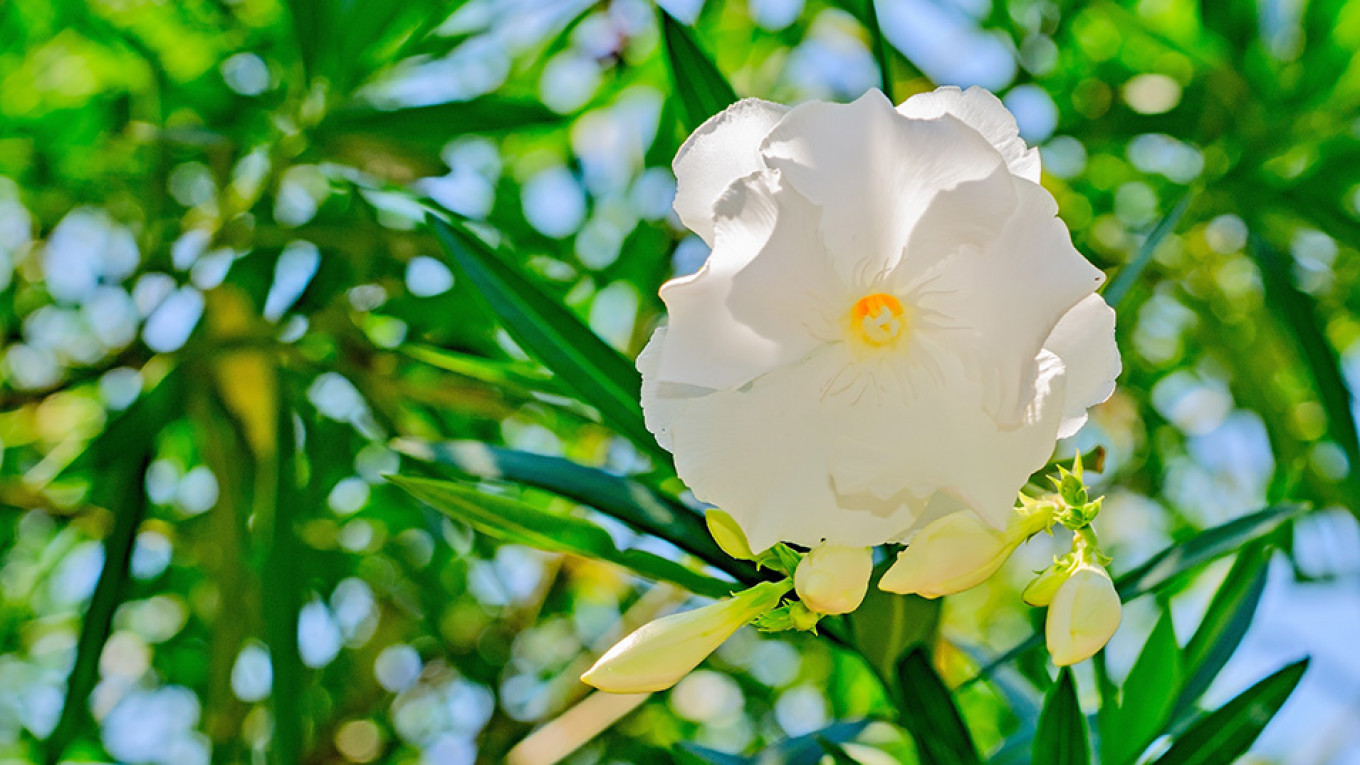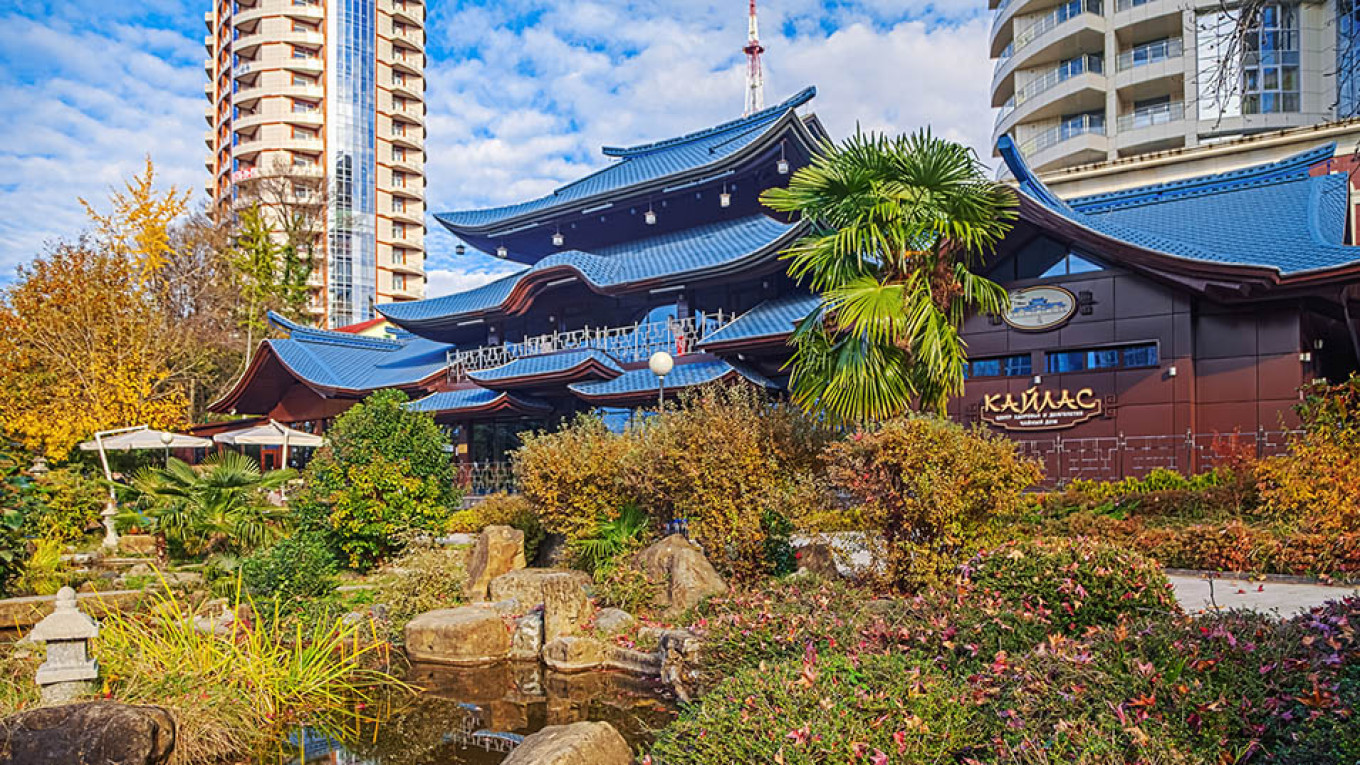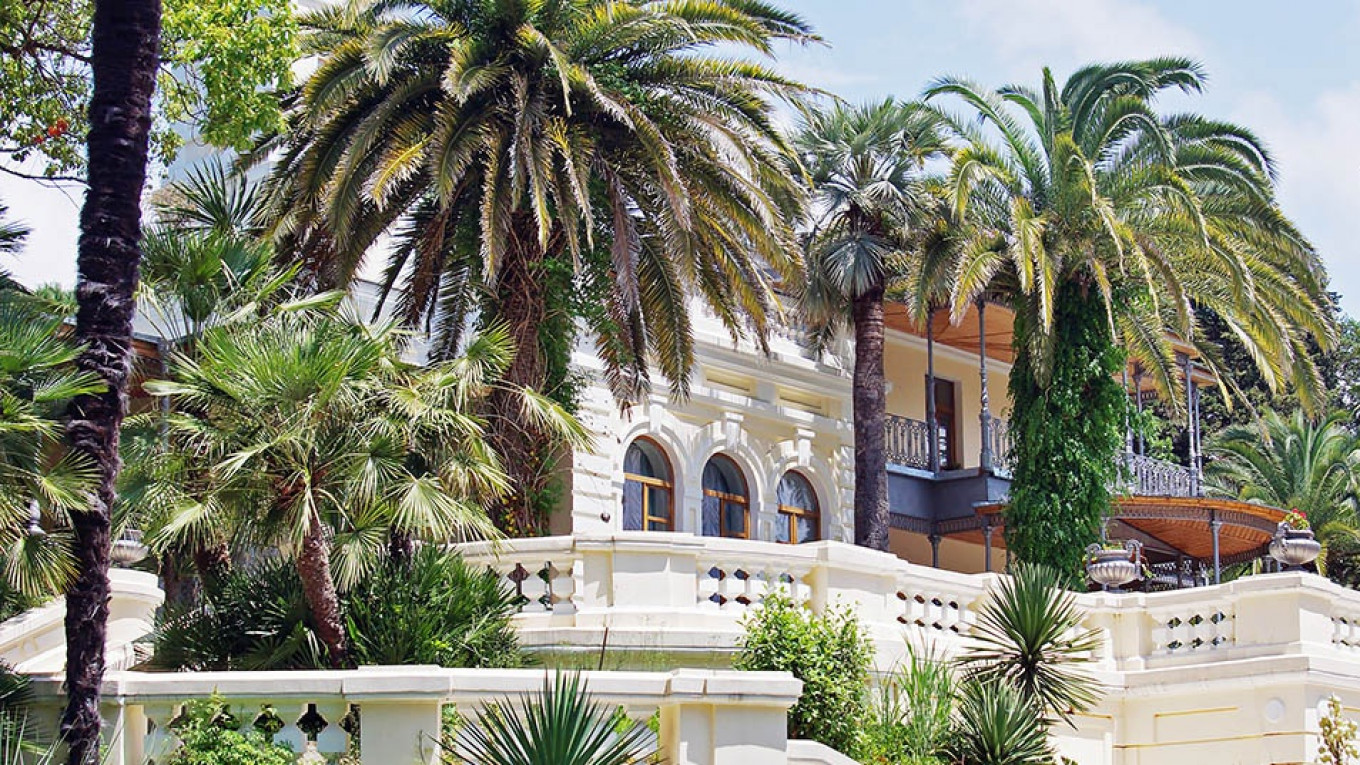Sochi’s lush parks are a salvation in the summer for anyone trying to find shade from the scorching sunlight. This much would already be enough to satisfy city visitors, but in Sochi, parks offer a little bit more.
The arboretum
While Sochi is famous for its many sprawling and exotic parks, the Arboretum is the crown jewel in this expansive network. Sochi’s Arboretum is one of the largest in the world and worth a day trip of its own. If you do not have a whole day to spare, maximize your time by taking a cable car to the highest point in the park then walking downhill to the front entrance. The top viewing platform offers breathtaking views of the Caucasus Mountains, and looking down at the park it is hard to believe that it was built on the enthusiasm of one person, especially someone with no background in gardening. That one person was the aristocrat and publisher of a St. Petersburg newspaper, Sergei Khudekov, who bought 50 acres of land in Sochi in 1889.
Exotic plants were brought in from botanical gardens in the Caucasus and Crimea, even Europe. Terraces, ponds, fountains and sculptures helped to make the arboretum even more heavenly, and Khudekov was so enchanted with the results that he built a villa there and named it Nadezhda in honor of his wife.
Unfortunately, the good times did not last. Khudekov had to sell the garden after the revolution in 1917, and the park fell into disarray and many plant species were lost. It was restored only a decade later as part of Josef Stalin’s efforts to turn the city into a top-notch resort.
Now the park covers 49 hectares and has more than 1,700 plant species, including 76 varieties of pine, 80 varieties of oak and 24 species of palm trees, as well as bamboos, cypresses and rare subtropical plants. In addition to the wide variety of plants, you will have a chance to see some exotic birds in the garden. Peacocks proudly walk along its alleys, ostriches look out from their cages while swans, pelicans and ducks swim nonchalantly in the lower pond.
Kurortny Prospekt, 74 dendrarium.ru

Friendship Tree Garden and Museum
The Friendship Tree Garden is living proof that magical things can happen but, unlike any fairytale you have heard before, this one begins with a Soviet researcher. Fyodor Zorin had a dream to grow new, frost-resistant varieties of citrus trees. Zorin in 1934 set out to incorporate different species into a single-tree crown. Eventually he had Japanese mandarins, Spanish oranges, Chinese kumquats, Italian lemons and American grapefruits, among other citrus varieties, growing in one spot.
Sochi’s subtropical climate is a real gift to garden-lovers.
Zorin’s experiment might have been overlooked if not for well-known polar explorer Otto Schmidt, who was so fascinated by the idea of uniting the world under a solitary tree that he grafted his own twig onto it in 1940, and others soon followed. Now the Friendship Tree has twigs that were grafted by people from 167 countries. There are more than 600 living autographs in total and if you stick your head through the shrubbery, you will see small plaques with the names of political leaders from former Russian President Boris Yeltsin to the mayor of Guatemala City, United Nations secretary-generals, Soviet singers, German pastors and Mexican artists.
Ulitsa Yana Fabriciusa, 2/5 vniisubtrop.ru

The Russian-Japanese Friendship Garden
Cozy and understated, the Russian-Japanese Garden may not have the grandeur of the Sochi Arboretum or the symbolic message of the Friendship Tree, but it is a much-needed alcove of peace in the very heart of the city. The park opened in 1986 and showcases plants that were brought to Sochi straight from Japan. As it is small, the easiest way to spot the park is to locate the small dragon statue at the entrance.
Kurortny Prospekt
Sycamore Alley
Soviet Komsomol members might have created Sochi’s beloved Komsomolsky Skver, but their idea to present the city with a nice walking zone was not entirely original. Another group of students took up shovels and planted an alley of sycamores in the city center in 1913. The alley was dedicated to the 300-year anniversary of the Romanov dynasty and miraculously survived the Soviet period. Some trees did perish in 1993, when construction workers put heating pipes too close to their roots, but have since been replanted. Sycamores are valued for their long life spans, so as you walk down the alley, imagine what it looked like a century ago and what it will look like up to 2,000 years from now. Also try to come back to the area in the evening to watch the Singing Fountains, which are located along the alley. Their song-and-dance number will surely make you appreciate how beautiful Sochi can be after sundown.
Kurortny Prospekt
A Message from The Moscow Times:
Dear readers,
We are facing unprecedented challenges. Russia's Prosecutor General's Office has designated The Moscow Times as an "undesirable" organization, criminalizing our work and putting our staff at risk of prosecution. This follows our earlier unjust labeling as a "foreign agent."
These actions are direct attempts to silence independent journalism in Russia. The authorities claim our work "discredits the decisions of the Russian leadership." We see things differently: we strive to provide accurate, unbiased reporting on Russia.
We, the journalists of The Moscow Times, refuse to be silenced. But to continue our work, we need your help.
Your support, no matter how small, makes a world of difference. If you can, please support us monthly starting from just $2. It's quick to set up, and every contribution makes a significant impact.
By supporting The Moscow Times, you're defending open, independent journalism in the face of repression. Thank you for standing with us.
Remind me later.






